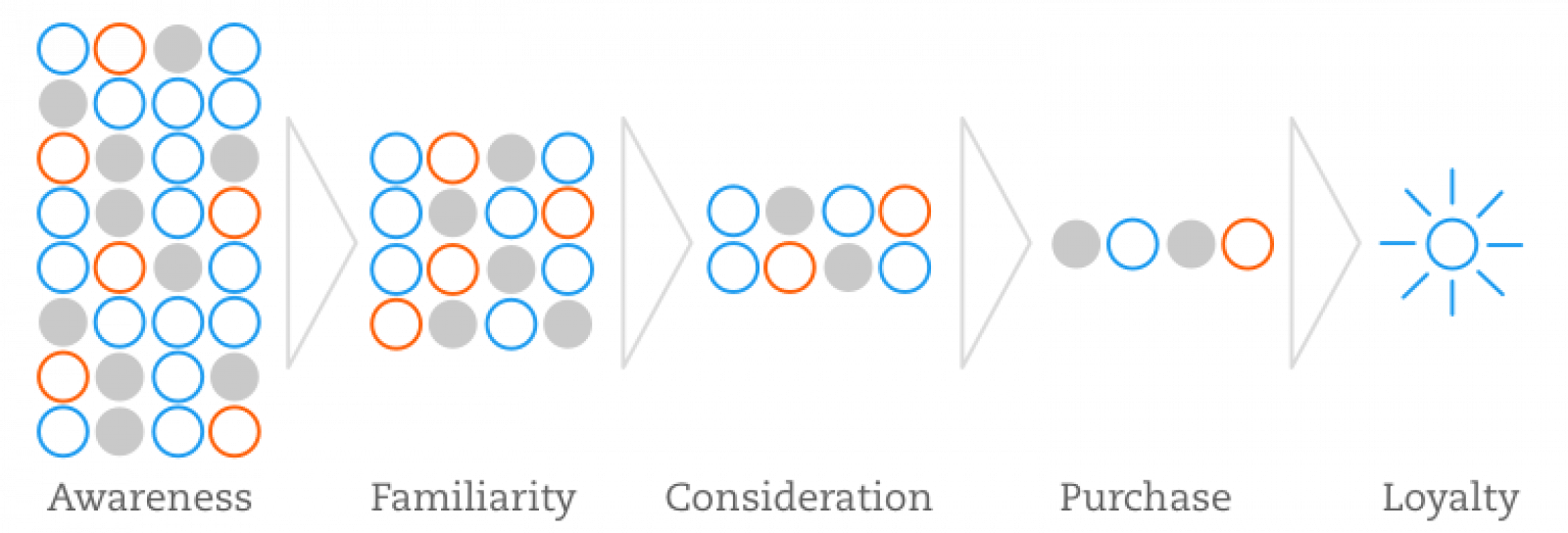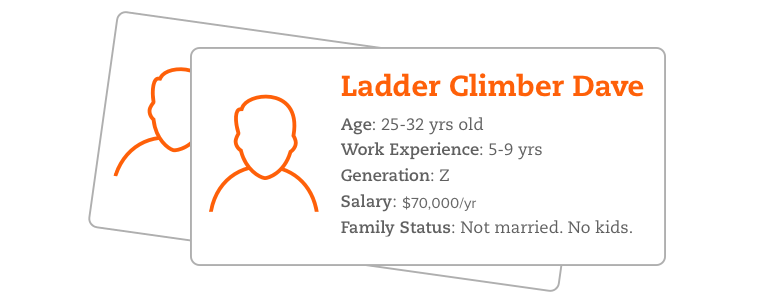Prospective students are continually receiving offers from every brand and institution out there, every moment of the day. How do you break through the noise? The first, and most important, step in your enrollment marketing efforts is to truly understand the audience to which you’re speaking (enter: persona modeling — more on that in a minute) and then, to identify how you’ll attract their attention and usher them through the enrollment journey.
In higher education, the enrollment funnel has long been the model used to drive marketing and admissions strategy. However, prospective graduate students don’t adhere to a traditional enrollment cycle, thus, the funnel breaks down. Viewing the graduate enrollment process through the lens of a traditional customer decision journey (more commonly favored by marketers in commercial fields) allows for more flexibility for graduate enrollment managers to maximize efficiency in marketing and recruitment tactics. Let’s explore how to begin making this shift in strategy.

Customize Your Messaging to the Graduate Audience
Like many other efforts in enrollment, your outreach toward the graduate audience must be curated and customized. Because we are working outside of the traditional enrollment funnel, tactics must be hyper-personalized to the student based on not only where they are in their decision journeys, but also in their lives.
Consider this: On one end of the graduate student spectrum, you have the fresh-out-of-undergrad, hungry-to-learn 22-year-old. This student has fewer considerations for finding a graduate program outside of what feels like the right fit. On the other end of the spectrum is the single parent who is looking for a graduate program that will propel them into the next stage of their career; earning them more money and stability for their family. This student’s concerns when looking for a program are limitless — financial aid, flexible scheduling and formats, and time to completion.
The ways in which you speak to these two students should drastically differ, both in means of communication and tone/voice. This is where the adoption of the customer decision journey model, as opposed to the traditional enrollment funnel, is greatly beneficial. This strategy allows us to better understand our prospects and broaden our perspective when it comes to engaging with them.
So, how do we meaningfully customize our engagement toward this audience?
The Power of Personas
Persona modeling is the process of creating representations of who your ideal customers are, informed by research and historical data. This tactic allows for segmenting your audience based on factors such as demographics, psychographics, behavior, and more that you can then apply to your strategic messaging.
The first step of establishing personas is to do some digging: Mine your CRM for data and conduct both qualitative and quantitative research. Once you have your data in place, it’s time to map student information with a solid plan for engagement. Important questions to consider when building this plan include: What are the most important pieces of information this student needs to know? How should we speak to them? What are they motivated and inspired by?
By answering these questions, you should have a clear vision for each of your distinct personas. Now, it’s time to integrate these personas into your graduate student journey map.
Leveraging Personas to Personalize Your Journey Map
Like your prospective students, each persona is unique and will respond differently to messaging throughout their journey. Take each of your customer personas and strategically design their journey map to define targeting, messaging, and communication tactics at each step.
Let’s walk through an example together. Meet Dave, a prospective graduate student of Spark University.

Step 1: Awareness
Dave feels frustrated and stuck in his career. In an effort to climb the corporate ladder, he asks some friends for advice, engages with some professional organizations, networks on LinkedIn, and looks up free professional development opportunities.
How Spark University Meets Him
- Word of mouth
- Free resources (courses, webinars, white papers, podcasts, video)
- Digital media advertising
Step 2: Familiarity
Feeling hopeful about his future, Dave seeks out relevant resources that fit within his specific criteria around the time, energy, and money that he’s willing to spend. Once he has a grasp on these criteria, he researches what different institutions can offer him.
How Spark University Meets Him
- Student/faculty/alumni profiles
- Testimonials
- Events
Step 3: Consideration
Dave has decided that graduate school is the right route for him and his lifestyle. Along with teaching him practical skills and holding him accountable, it will give him the status that comes along with an advanced degree. Dave connects with admissions offices and starts his applications.
How Spark University Meets Him
- Phone calls/text messages
- Live chat
- Meetings (in person or virtual)
- Invitations to attend classes
- Curriculum information
- Student outcome info
- Scholarships/funding
Step 4: Purchase
Dave has chosen Spark University! He has enrolled in classes and is working toward his degree. He is still trying to strike a balance between working and taking classes.
How Spark University Meets Him
- Dedicated advisor
- Text message/email check-ins
- Surveys about experience
- Events
Step 5: Loyalty
Graduate school was a success for Dave. He achieved his goal and is climbing the corporate ladder. He seeks continual professional growth, as well as the honor of supporting his alma mater, in an effort to continue to better himself.
How Spark University Meets Him
- Professional/networking events
- Career resources
- Giveaways
- Donation rewards/recognition
Our modern reality is that everything we do — for every distinct population — must be highly personalized. The prospective graduate population is no exception. These unique students require intentionally tailored messaging that will engage them in meaningful ways. Building personas empowers teams to employ strategic tactics and makes prospects feel important, and marketing to them through the framework of a customer decision journey makes it easier to connect with these students however and whenever they are ready.
The team at Spark451 is ready to discuss your graduate enrollment challenges and help customize your marketing and recruitment strategies using a customer decision journey approach. Feel free to reach out so we can get started.